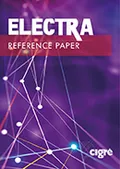Summary
SF6 is essential for the transmission and distribution equipment and switchgear, because of its excellent dielectric, arc quenching, heat transfer and chemical recombination properties.
This has been successfully proven since the 1960s for high-voltage equipment and since beginning of the 1980s for medium-voltage equipment. The size of equipment and switchgear has been significantly reduced since the beginning of the SF6 technology. Nowadays, SF6 technology is even more important to bring bulk power at high-voltage level closer to the consumers as for mega cities.
Moreover, compact SF6 switchgear support applications such as offshore platforms or wind power installations where small sizes and light weights are requested.
In spite of all the technical advantages of the SF6 technology, SF6 is a potent greenhouse gas which is covered by the Kyoto Protocol [1]. Therefore SF6 must be managed within a closed cycle, avoiding any deliberate release to the atmosphere. During the last 20 years, as a consequence, significant effort has been undertaken to reduce SF6 emissions. The focus for manufacturers and asset owners was on finding ways of increasing the tightness of equipment and reducing handling losses.
In spite of the fact that during the last 30 years significant efforts were made to search for SF6 alternatives, no industrially viable alternative to SF6 technology has been found with the same performance.
Additional informations
| Publication type | Reference Papers |
|---|---|
| Reference | PP_274_1 |
| Publication year | 2014 |
| Publisher | CIGRE |
| File size | 430 KB |
| Pages number | 6 |
| Price for non member | Free |
| Price for member | Free |
Authors
VASIGH, COLE, Zhang, ADAMEK, CHRISTOPH ECK, Johan Hedlund, CARLO ZGRAGGEN, BRUNNSBERG, TURCOTTE, CASTILHO, LIPS, BURET, LAPWORTH, NAKAZAWA, AESCHBACH


